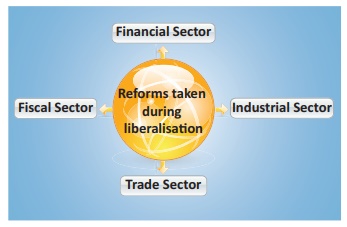Chapter: 12th Commerce : Chapter 20 : Business Environment : Liberalization, Privatization and Globalization
Advantages and Disadvantages of Liberlization
Advantages and Disadvantages of Liberlization
Advantages of Liberlization
(a) Increase
in foreign investment: If a
country liberalises its trade, it will make the country more attractive for
inward investment. Inward investment leads to capital inflows but also helps
the economy through diffusion of more technology, management techniques and
knowledge.
(b) Increase
the foreign exchange reserve: Relaxation in the regulations
covering foreign investment and foreign exchange has paved way for easy access
to foreign capital.
(c) Increase
in consumption: Liberalization increases the number of goods
available for consumption within a country due to increase in production.
(d) Control
over price: The removal of
tariff barriers can lead to lower prices for consumers. This would be
particularly a benefit for countries who are importers.
(e) Reduction
in external borrowings: Liberalization reduces the dependence on external
commercial borrowings by attracting more foreign investments.
Disadvantages of Liberlization
(a) Increase
in unemployment: Trade liberalisation
often leads to a shift in the balance of an economy. Some industries grow, some
decline. Therefore, there may often be structural unemployment from certain
industries closing.
(b) Loss
to domestic units: With fewer entry
restrictions, it has been possible for many entrants to make inroads into the
country, which poses a threat and competition to the existing domestic units.
(c) Increased
dependence on foreign nations: Trade liberalisation means firms will face greater competition from
abroad. When competition is not automatically enhanced, it can lead to
domination by big institution that has market controlling powers.
(d) Unbalanced
development: Trade liberalisation
may be damaging for developing economies which cannot compete against free
trade. The trade liberalisation often benefits developed countries rather than
developing economies.

Related Topics